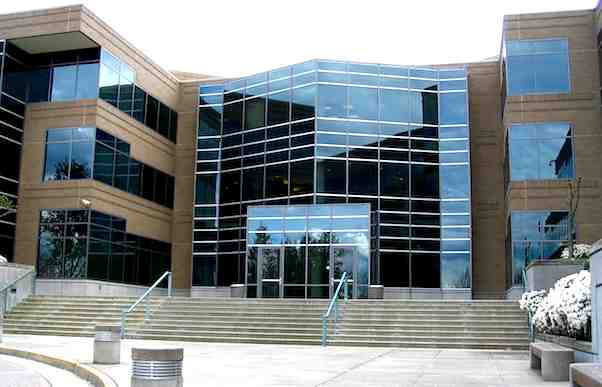
Microsoft Corporation’s organizational structure enables the business to grow through product innovation. The company’s corporate structure is the anatomy and arrangement of the organization and its components. In Microsoft’s case, this organizational structure stresses the importance of business output, including information technology, online services, and consumer electronics. Considering the company’s dominance in the IBM PC-compatible operating system market, this company structure helps maintain competitive advantages, in accordance with Microsoft’s generic competitive strategy and intensive growth strategies. The company’s long-term success depends on the suitability of its corporate structure to the conditions of the IT industry.
Microsoft’s organizational structure reflects the needs of the business in responding to market dynamics. A responsive company structure and organizational design ensure long-term success in the IT industry. Strategic goals based on Microsoft’s vision and mission are implemented through the facilitation of this business structure to ensure an effective and profitable business despite tough competition.
Features of Microsoft’s Organizational Structure
Microsoft has a product-type divisional organizational structure. This structure involves divisions that are based on the types of IT, online services, and consumer electronics that the business offers. The following characteristics define Microsoft’s organizational structure:
- Product-type divisions (most dominant structural feature)
- Global corporate departments
- Geographic segments
Product-Type Divisions. Product-type divisions are the primary characteristic of Microsoft’s company structure. The company uses product or organizational output as the main criterion for grouping personnel and related resources in IT business operations. For example, the organization has a self-contained division for Intelligent Cloud products and separate divisions for other products. The business strengths and competencies enumerated in the SWOT analysis of Microsoft support the effectiveness of these divisions of the company structure. This structural feature contributes to the company’s organizational capacity for product innovation. The following are the product-type divisions in Microsoft’s corporate structure:
- Productivity and Business Processes
- Intelligent Cloud
- More Personal Computing (Surface laptops and tablets, Xbox, Microsoft Edge, Windows, etc.)
Global Corporate Departments. Global corporate departments are a secondary characteristic that defines Microsoft’s business structure and its hierarchy. These departments or groups are based on the essential business functions in operations in the computer technology, online services, and consumer electronics industry. For example, the Human Resources department of this organizational structure addresses workforce needs and concerns relating to Microsoft’s organizational culture (business culture). This structural characteristic facilitates the unity of the IT business organization. The following are the global corporate departments in Microsoft’s structure:
- Office of the CEO
- Worldwide Commercial Business
- Marketing
- Microsoft Global Sales, Marketing and Operations
- Corporate Strategy and Operations
- Microsoft Cloud and Enterprise Group
- Human Resources
- Finance
- Business Development
- Applications and Services Group
- Windows and Devices Group
- Technology and Research
- Legal
Geographic Segments. Microsoft’s corporate structure involves geographic segments as the least significant characteristic. These segments are used to group operations in the company’s financial reports. Geographic segments also provide regional market-specific data for Microsoft’s marketing mix (4Ps) and related strategies and tactics. For example, marketing campaigns used in the United States differ from campaigns used for other regions or countries. Moreover, the geographic segments of this company structure support a limited degree of flexibility in adjusting business strategies based on local variations of the industry and market trends outlined in the PESTEL/PESTLE analysis of Microsoft. The following are the main geographic segments in Microsoft’s organizational structure:
- United States
- International
Microsoft’s Structure: Strategic Implications, Advantages & Disadvantages
A strategic implication of Microsoft Corporation’s organizational structure is the ability to focus on product development. For example, the company uses its Intelligent Cloud division to offer cutting-edge cloud computing services. Also, this business structure ensures profitable consumer electronics. A corresponding advantage of this corporate structure is its contribution to the competitiveness of Microsoft’s Surface laptops and tablets, Azure, and other IT products against those of Apple, Google (Alphabet), Amazon, IBM, and Samsung, as well as the competitiveness of the Xbox against other video game consoles, like Sony’s PlayStation. Thus, the competitive threats demonstrated in the Five Forces analysis of Microsoft are addressed with support from this company structure.
A disadvantage of Microsoft’s organizational structure is its limited facilitation of strategies for regional market differences. Regions have varying preferences with regard to the company’s computer hardware and software, such as in the case of tablets and other mobile devices. Increasing the significance of geographical segments in this organizational structure can overcome such a disadvantage in region-specific strategic implementations, such as in the aspect of marketing the company’s IT, consumer electronics, and online services.
References
- Junge, S., Luger, J., & Mammen, J. (2023). The role of organizational structure in senior managers’ selective information processing. Journal of Management Studies, 60(5), 1178-1204.
- Lekkerkerk, L. J. (2024). The Model Innovation and Organizational Structure: A Zoom Lens on Organizational Structure. In European Perspectives on Innovation Management (pp. 13-44). Cham: Springer International Publishing.
- Microsoft Corporation – Executive Officers.
- Microsoft Corporation – Form 10-K.
- Microsoft Corporation – Segment Information.
- U.S. Department of Commerce – International Trade Administration – Software and Information Technology Industry.